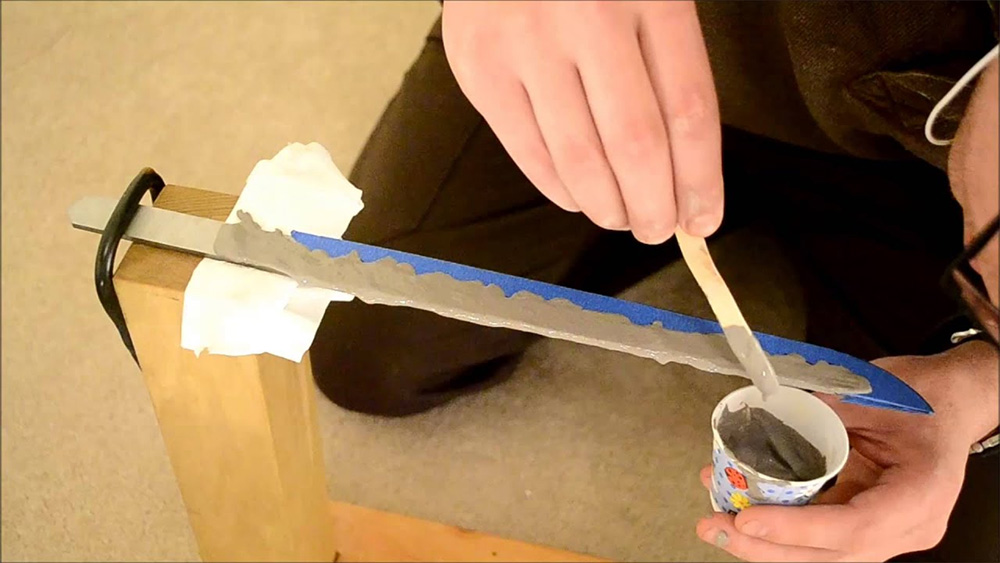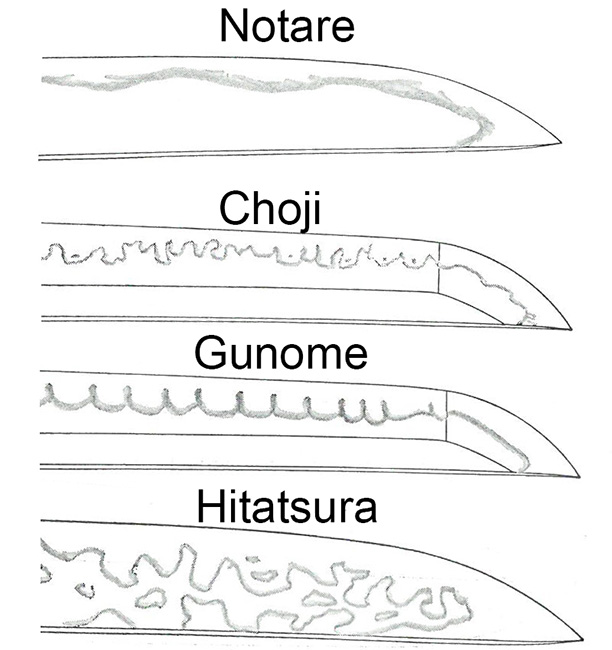The formation of Japanese sword's hamon

When examining authentic Japanese swords, you may find various lines, shapes, patterns, or geometric figures that extend along the length of the blade, called tempered lines or "hamon", which are a defining characteristic of traditional Japanese swords. From katana and wakizashi to tanto and tachi, countless Japanese swords have Hamon, which is the result of differential heat treatment.
Differential heat treatment

Our previous article has introduced in detail what is differential heat treatment. Cutlers have discovered that by heating and cooling the spine and edges of the blade at different speeds, they can achieve better results. The Swordsman first heats the entire blade, and then coats the spine of the blade with a thick layer of clay. Next, the Swordsman will quench the entire blade with water or oil. However, since the spine is covered with a thick layer of clay, it cools more slowly than the edges, resulting in a firm edge and flexible spine
When the sword is differentially heat-treated, it will change the physical properties of the sword. As the edges become stronger, it will produce visible lines. Called hamon, it is essentially the outline of the hardened area of the blade.
Traditional Japanese swords, after differential heat treatment, have two kinds of steel: martensitic steel and pearlitic steel. The former is a harder high-carbon steel that grows on the edge of the blade, while the latter is a softer high-carbon steel that grows on the spine of the sword. The area where these two steels meet has a visual line called Harmon.
The origin of hamon in traditional Japanese swords

I don't know who was the first Swordsman to make and use hamons in traditional Japanese swords. However, there is an old legend that the Japanese swordsman Amakuni Ansuna was the pioneer of this technique.
Legend has it that when the emperor of Japan returned to his kingdom, Yasutsuna found that half of the sword in the emperor’s weapon was broken. Therefore, Yasutsuna began to experiment with new sword forging techniques to try to make a stronger sword that is less likely to break. This prompted Yasutsuna to invent differential heat treatment around the 8th century. Whether this legend is true is unknown, but most historians agree that differential heat treatment—together with Harmon—was invented at some point in the feudal era of Japan.
Discover the many attractive options available for Katana swords and custom swords.
Want a unique sword? Feel free to contact us:
Phone: 086 13739276006
Email: [email protected]
Website: www.hanbonforge.com
Custom Sword Page: www.hanbonforge.com/CUSTOM-SWORDS/Custom-Your-Own-Swords

Leave a Comment